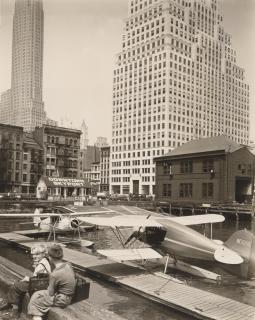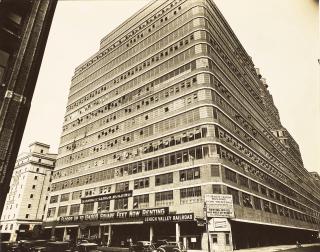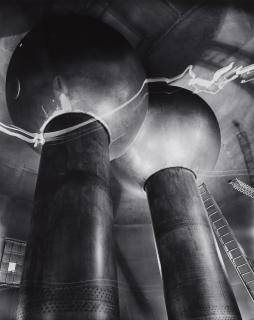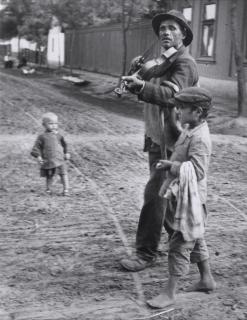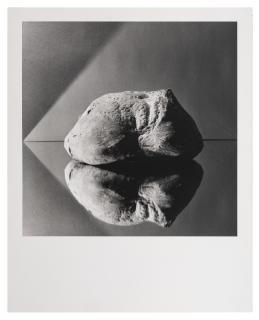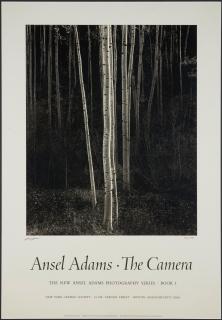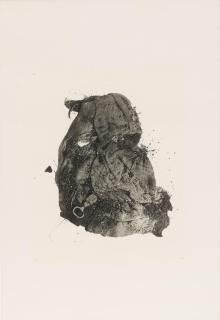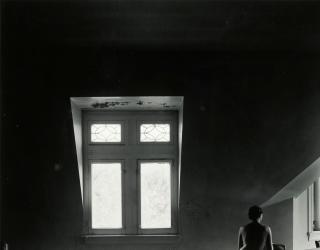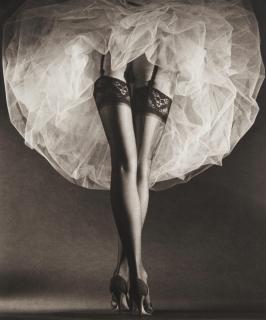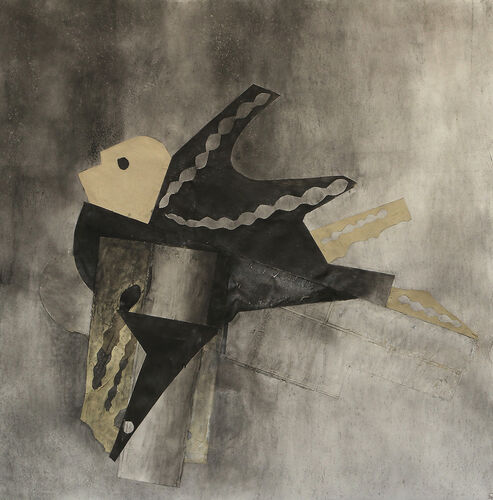Berenice Abbott 1898 - 1991
The artist Berenice Abbott
- One of the most important American photographers of all time.
- »Changing New York« still serve as a historical chronicle of the Great Depression.
- She developed her style while working for Man Ray in Paris in the 1920s.
Berenice Abbott was a very influential American photographer. She is best known for her documentary photographs of New York street life and architecture, as well as her scholarly work. Born in Springfield, Ohio, in 1898, she initially pursued a career in journalism before deciding to study sculpture in Paris in 1921. After a brief stay in Berlin, she soon returned to the French capital. In Paris, Abbott worked as an assistant to the surrealist photographer Man Ray. It was during this time that she developed her now distinctive style.
Inspired by the avant-garde movements of the time, she experimented with abstract and surrealist photography. She was also inspired by the work of Eugène Atget. Upon her return to the United States in 1929, Abbott embarked on a major project that would define her career: documenting the architectural and social changes in New York City during the Great Depression, which she later published in the illustrated book Changing New York (1939). Her photographs highlighted the stark contrast between old and new and still serve as a historical chronicle of the cityscape.
In addition to Changing New York, Abbott produced another landmark book, Greenwich Village Today and Yesterday (1949). She also taught photography at the New School for Social Research in New York and, beginning in 1940, turned to scientific photography. She produced photographs of physical phenomena such as waves, magnetism, and microscopic objects, some of which appeared in a school textbook. Her scientific photographs are a testament to her technical skill and artistic sensibility.
In 1965, Abbott moved to Maine after the death of her partner, and three years later she sold all of her photographs to the MoMA in New York. In 1983, she was made an honorary member of the American Academy of Arts and Letters. Abbott died in 1991 in her new home of Monson, Maine, at the age of 93. With her artistic and scientific skills and documentary eye, the photographer made a significant and lasting contribution to photography that continues to this day.
Die Künstlerin Berenice Abbott
- Eine der bedeutendsten amerikanischen Fotografinnen überhaupt.
- »Changing New York« dient bis heute als Chronik über die Zeit der Großen Depression.
- Entwickelte ihren Stil während ihrer Arbeit bei Man Ray im Paris der 1920er Jahre weiter.
Berenice Abbott war eine einflussreiche amerikanische Fotografin. Sie ist vor allem für ihre dokumentarische Fotografie des New Yorker Straßenlebens und der Architektur sowie für ihre wissenschaftliche Arbeit bekannt. 1898 in Springfield, Ohio, geboren, schlug sie zunächst eine journalistische Laufbahn ein, ehe sie sich 1921 für ein Studium der Bildhauerei in Paris entschied. Nach einem kurzen Aufenthalt in Berlin kehrte sie schon bald in die französische Hauptstadt zurück. In Paris arbeitete Abbott als Assistentin des surrealistischen Fotografen Man Ray.
Während dieser Zeit entwickelte sie ihren heute unverwechselbaren Stil. Inspiriert von den damals höchst aktuellen Avantgardebewegungen experimentierte sie mit abstrakter und surrealistischer Fotografie. Auch die Arbeit von Eugène Atget sollte ihr als Inspirationsquelle dienen. Nach ihrer Rückkehr in die Vereinigten Staaten im Jahr 1929 begann Abbott mit einem wichtigen Projekt, das ihre Karriere bestimmen sollte: Sie dokumentierte die architektonischen und sozialen Veränderungen New York City während der Großen Depression und veröffentlichte Teile davon später im Bildband Changing New York (1939).
Ihre Fotografien rückten den starken Kontrast zwischen Alt und Neu in den Vordergrund und dienen noch heute als historische Chronik des Stadtbildes. Neben Changing New York brachte Abbott ein weiteres wegweisendes Buch, Greenwich Village today and yesterday (1949), heraus. Außerdem war sie als Dozentin für Fotografie an der New School for Social Research in New York tätig und widmete sich ab 1940 auch der wissenschaftlichen Fotografie. Sie fertigte Aufnahmen von physikalischen Phänomenen wie Wellen, Magnetismus und mikroskopischen Objekten, die teils sogar in einem Lehrbuch für Schulen erschienen sind.
Ihre wissenschaftlichen Fotografien zeugen von ihrem technischen Können und ihrem künstlerischen Feingefühl. 1965 zog Abbott nach dem Tod ihrer Lebensgefährtin nach Maine, drei Jahre später verkaufte sie all ihre Fotografien an das MoMA in New York. 1983 nahm die American Academy of Arts and Letters sie als Ehrenmitglied auf. Abbott starb 1991 in ihrer neuen Heimat Monson, Maine, im Alter von 93 Jahren. Die Fotografin leistete mit ihrem künstlerischen, wissenschaftlichen Können und ihrem dokumentarischen Blick einen bis heute bedeutenden und bleibenden Beitrag zur Fotografie.

